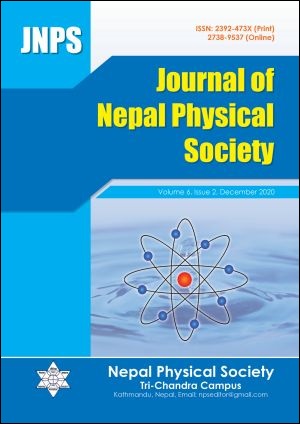Study of Ionospheric Variability During Super Substorms
DOI:
https://doi.org/10.3126/jnphyssoc.v6i2.34862Keywords:
Magnetosphere, Ionosphere, continuous wavelet transform, Super sub-stormAbstract
This paper study variability of three ionospheric parameters foF2, h′F and hmF2 to investigate the middle latitude ionospheric effect at Boulder, Colorado, USA (40°N, l105.0° W) during super substorms (SSSs) of 24 August 2005, and 7 September 2017 and 8 September 2017 respectively. Continuous wavelet transform (cwt) implemented to identify the low and high frequency and longer and shorter duration present in the signal. The result shows decrease in foF2 during SSSs of 24 August 2005 and 8 September 2017 and increase in foF2 during 7 September 2017. The highest fluctuation in h′F is noticed during SSS of 24 August 2005. The cwt shows that the coupling between solar wind and magnetosphere occurs between ~ 16 to 32 minutes for SSS of 24 August 2005 and between 27.9 to 64 minutes during super substorm of 7 and 8 September 2017 for all the ionospheric parameters respectively. This study leads to understand the impact of SSSs on communication signals due to energy injected in ionosphere during the coupling mechanism between magnetosphere-ionosphere.
Downloads
Downloads
Published
How to Cite
Issue
Section
License
All right reserved. No part of this Journal may be reproduced in any form or by any electronic or mechanical means, including information storage and retrieval system, without permission in writing from the publisher, except by a reviewer who may quote brief passage in a review. The views and interpretation in this journal are those of author(s) and they are not attributable to the NPS.




